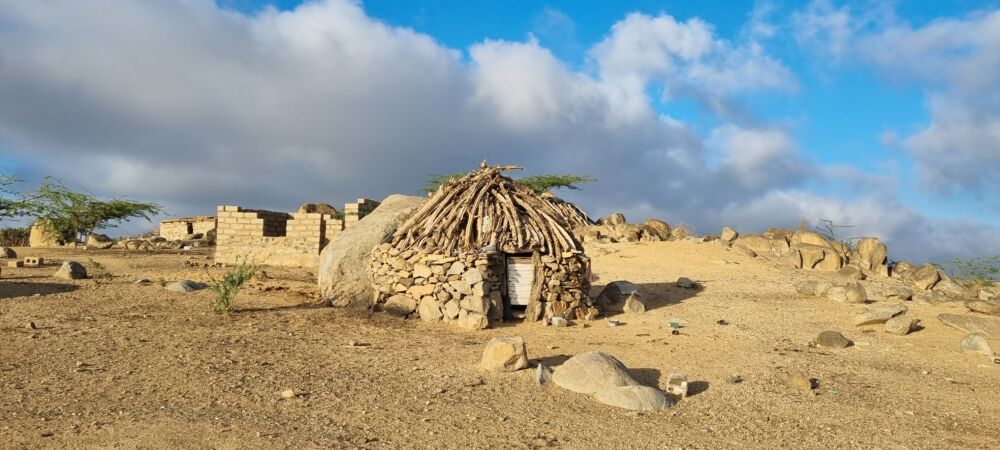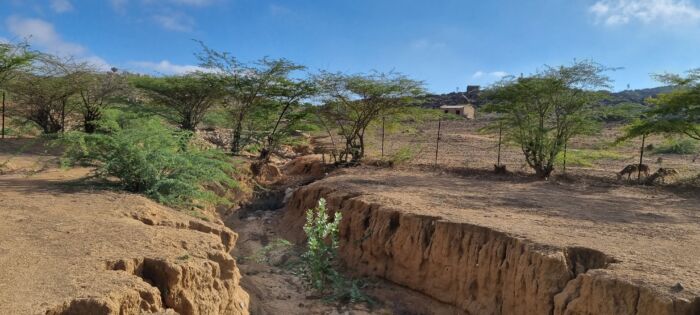Awakening the Giant- Insights from our visit to Sudan
Date
November 28, 2022
Vi Agroforestry continues to stretch herself into understanding environmental, climate change and socio-economic challenges experienced in the arid and semi-arid zones in the region and Africa at large where the organisation’s support is most needed. During the last quarter of 2022, the organisation commissioned a feasibility study to the Sudan to gain insights on the context vis-a vis the organisation’s working areas and approaches.
Sudan is the 3rd largest state in Africa occupying 1,886,068km2 and a population of 45.50 million (World Population Review, 2022). The country is endowed with numerous natural resources including oil, gold and vast rangelands that support pastoral and nomadic lifestyle. The Acacia Senegal (commonly known as hashab) is an important tree to the economy of the country due to its production of Sudan gum/gum arabic- an important export commodity in Sudan accounting for 15% of the country’s export (Hassan, 2017). The mighty Nile is also a key resource in the Sudan which is utilised by nationals for irrigated agriculture especially wheat growing. The Red Sea is the cornerstone for international trade in Sudan as it supports transportation of goods from the outside world into Sudan and supports export business as well. The two huge water bodies in Sudan support fishery industry.
Despite the huge resource base, Sudanese people are still highly vulnerable to socio-economic, political, climatic and environmental challenges. The endemic conflict between various political and military factions continue to complicate development process causing massive deterioration of service delivery by the government and huge environmental degradation. Being part of the Sahel region, Sudan is highly prone to desertification, soil erosion and flooding.
Enhancing tree cover, agroforestry, and value chain development
Our visit to the Sudan was an eye opener, the rural areas are hard hit by climate change impacts. The drought condition has affected vegetation and the land has been left bear due to wind erosion and encroachment of desert conditions into the agriculture land is evident. Besides this, the Mesquite tree (Prosopis juliflora) which had been introduced to combat desertification is causing devastating effects due to its invasive nature. It is fast spreading and taking over indigenous vegetation, watercourses, floodplains, roads, and agriculture land contributing to loss of arable land further complicating access to food and nutritional needs by the smallholder farmer families (Hoshino, et al., 2012). Our visits to the farms, helped us to see not only the nature of landscapes but also to view farming practices adopted by the farmers. Generally, the farming systems is monocropping with little sustainable land management practices being applied; agroforestry is missing and even where trees are planted, diversity is not considered. This clearly points out that tree planting is required in the country, practical demonstration of agroforestry and agroecological practices will go a long way to support the smallholder farmers in Sudan realise the full potential of their land, adapt to and mitigate climate change effects, build their livelihoods and increase incomes especially for women and youth.

In Sudan several indigenous food crops are cultivated e.g., groundnuts, sesame, sorghum, and millet. Smallholder farmers need support and training to develop farming into a more productive activity. The hashab tree also presents an opportunity for farmers to intentionally grow and conserve it for business while contributing to land restoration. Identified gaps include lack of support in local value addition, access to innovations and tools for tapping the gum and inadequate capacities in negotiating for better markets and prices for their produce. Despite their role in developing farmers capacities and coordinating extension services, farmers organisations and unions are weak and almost non-existence. The farmers are yearning for an opportunity to work together and strengthen their voices as they demand for their rights, fair trade, agricultural support and access to finance and markets.
References
Hassan, Y. (2017). Gum Arabic in Sudan: An Analysis of the Value Chain. Khartoum: NA.
Hoshino, B., Kamaramalla, A., Elbasit, A., Maneyeva, K., Yoda, K., & Suliman, M. (2012). Evaluating the Invasion Strategic of Mesquite (Prosopis juliflora) in Eastern Sudan Using Remotely Sensed Technique. Journal of Arid Land Studies, 1-4.
World Population Review. (2022, November 23). Sudan Population 2022 (Live). Retrieved November 23, 2022, from worldpopulationreview.com: worldpopulationreview
Article by Saif Omar and Dr. Monica Nderitu